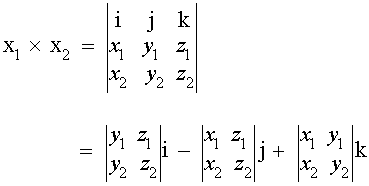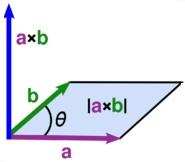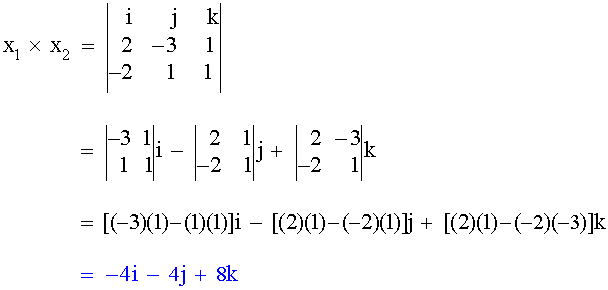Cross Product of Vectors
The cross product between vectors x1 = (x1, y1, z1) and x2 = (x2, y2, z2) is defined by:

The cross product may be used to determine the vector, which is perpendicular to vectors x1 = (x1, y1, z1) and x2 = (x2, y2, z2).
Additionally, magnitude of the cross product, namely | a × b | equals the area of a parallelogram with a and b as adjacent sides.

Additionally, magnitude of the cross product, namely | a × b | equals the area of a parallelogram with a and b as adjacent sides.

Properties of the Cross Product:
Using the cross product, determine the vector perpendicular to x1 = (2, −3, 1) and x2 = (−2, 1, 1)
- a × b = −(b × a)
- a × (b + c) = (a × b) + (a × c)
- (c a) × b = a × (c b) = c (a × b) for scalar c
- | a × b | = |a| |b| sin θ, where θ represents the angle between the vectors
- a and b are parallel ⇔ a × b = 0
Example:
Using the cross product, determine the vector perpendicular to x1 = (2, −3, 1) and x2 = (−2, 1, 1)
Solution:

Related Topics:


